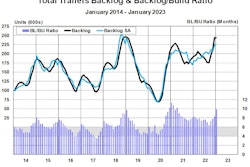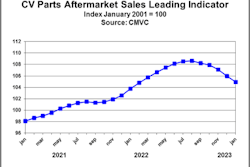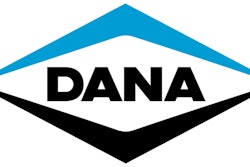
Inflation has moved to the top of “the big three” concerns for commercial vehicle suppliers, MEMA’s Richard Anderson reported Wednesday in the association’s monthly Pulse webinar.
This month’s webinar, which also included an electric vehicle market analysis and forecast from Frost & Sullivan, began with Anderson sharing the results of MEMA’s monthly membership survey. Anderson said inflation moved back into the top concern for MEMA members this month as supply chain challenges and non-production labor levels continue to improve.
“Staffing concerns have mostly abated,” he said. Production staffing is still below historical norms but other areas of suppliers’ businesses, such as engineering, operations, marketing and sales, are now close to industry pre-COVID norms. Anderson also reported while electronic subcomponent fulfillment rates remain low (79% per February’s MEMA survey), metals and other raw material component categories are finally bouncing back for suppliers.
Freight and logistics performance also has improved, with MEMA survey responders rating that aspect of their business performance at 89%. Anderson said that number should be “cause for celebration” for most members though he did also note that sector does appear to still have some volatility as it “can be an area with great disruption.”
[RELATED: Repair labor rates climbing, driving technician pay raises]
Looking into 2023, Anderson said February’s survey responses tracked with other recent surveys. Supplier sentiment for 2023 is somewhat muted; February survey responders predict first quarter year over year growth around 8% — a strong number normally but slightly discouraging considering inflationary conditions.
Conversely, Anderson said while the number of survey responders preparing for capacity planning increases for 2023 remained firm at 57% in February from an identical number in November, the number expecting ‘significant growth’ was 19 percent last month after being 0% in the fall.
Industry EV forecast to 2030
Wednesday’s webinar also featured two forecasting experts from Frost & Sullivan, who presented their most recent analysis for battery electric vehicle (BEV) and, to a lesser extent, hydrogen fuel cell, adoption rates from now to 2030.
Frost & Sullivan’s Jean Dominique Bonnet opened the presentation by asking webinar attendees what EV adoption rates are likely to be by the end of the decade. An overwhelming majority of attendees (78%) expect EVs to represent to 20-25% of the market in 2030.
Frost & Sullivan’s expectation is higher. Bonnet said the company is predicting market share of 37.5%, 39.9% and 30.3% for EVs in the light-, medium- and heavy-duty markets by 2030. Bonnet said the strength in the medium-duty sector will be driven by vehicle price and ideal duty cycle options. In the heavy-duty market, Bonnet said Frost & Sullivan expects regional haul to be the strongest segment for BEVs at 40.3% penetration in 2030, followed by long haul 31.9% and vocational 17.4%.
[RELATED: TMC Panel says there's no 'learn as you go' with electric vehicles]
What will drive the adoption curve? Bonnet said Frost & Sullivan’s research projects the total cost of ownership (TCO) for BEV linehaul Class 8 tractors will dip below conventional internal combustion engine equipment in 2027 — mostly driven by increasing costs due to EPA 2027 regulations and lowering expenses with BEV development. He added hydrogen fuel cell, which had a TCO of nearly double internal combustion engines in 2020, is likely to bring its TCO in line with ICE by 2030.
What could slow these adoption rates? Frost & Sullivan points to battery compounds. Many of the raw materials required for Class 8 BEVs are not found in North America and will need to be sourced globally. Prices for those precious metals and elements could shift as demand increases.
Charging infrastructure will have an impact as well. Anderson said MEMA survey responders view charging as the biggest impediment to option in this market, followed by the complexity and the messy middle of non-ICE technologies entering the market.











